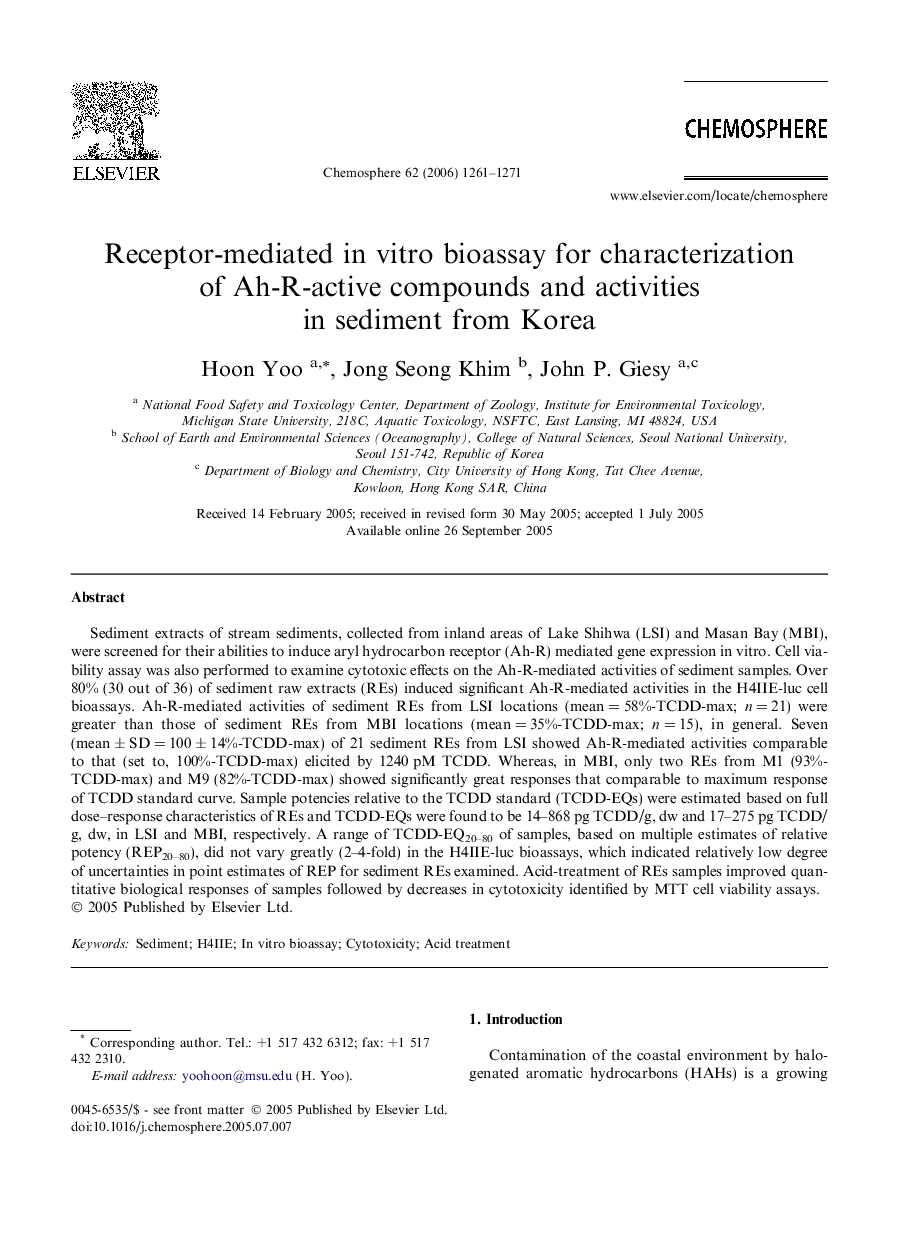| Article ID | Journal | Published Year | Pages | File Type |
|---|---|---|---|---|
| 4416114 | Chemosphere | 2006 | 11 Pages |
Sediment extracts of stream sediments, collected from inland areas of Lake Shihwa (LSI) and Masan Bay (MBI), were screened for their abilities to induce aryl hydrocarbon receptor (Ah-R) mediated gene expression in vitro. Cell viability assay was also performed to examine cytotoxic effects on the Ah-R-mediated activities of sediment samples. Over 80% (30 out of 36) of sediment raw extracts (REs) induced significant Ah-R-mediated activities in the H4IIE-luc cell bioassays. Ah-R-mediated activities of sediment REs from LSI locations (mean = 58%-TCDD-max; n = 21) were greater than those of sediment REs from MBI locations (mean = 35%-TCDD-max; n = 15), in general. Seven (mean ± SD = 100 ± 14%-TCDD-max) of 21 sediment REs from LSI showed Ah-R-mediated activities comparable to that (set to, 100%-TCDD-max) elicited by 1240 pM TCDD. Whereas, in MBI, only two REs from M1 (93%-TCDD-max) and M9 (82%-TCDD-max) showed significantly great responses that comparable to maximum response of TCDD standard curve. Sample potencies relative to the TCDD standard (TCDD-EQs) were estimated based on full dose–response characteristics of REs and TCDD-EQs were found to be 14–868 pg TCDD/g, dw and 17–275 pg TCDD/g, dw, in LSI and MBI, respectively. A range of TCDD-EQ20–80 of samples, based on multiple estimates of relative potency (REP20–80), did not vary greatly (2–4-fold) in the H4IIE-luc bioassays, which indicated relatively low degree of uncertainties in point estimates of REP for sediment REs examined. Acid-treatment of REs samples improved quantitative biological responses of samples followed by decreases in cytotoxicity identified by MTT cell viability assays.
